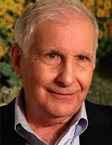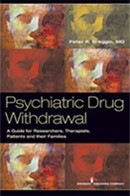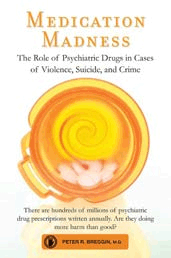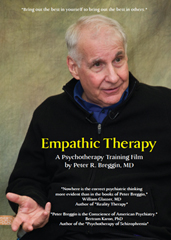Making Americans into Zombies
By Peter R. Breggin, MD
July 6, 2009
In 2008 the so-called antipsychotic drugs became America’s best selling class of drugs with $14.6 billion in sales. These newer agents are called atypicals or second-generation antipsychotics, but they produce all the all hazards of the older drugs and some newer hazards as well. The drugs include Risperdal, Zyprexa, Seroquel, Abilify and Geodon. Medications used to control cholesterol were second and antidepressants were fifth in sales.
The use of these newer antipsychotics will continue to grow like a mushroom cloud over America. The FDA has recently approved Risperdal and Abilify for treating children with schizophrenia as young as age 13 and children with bipolar disorder as young as ten years old. Furthermore, a recent FDA panel has recommended that the agency approve the other antipsychotics, Zyprexa, Seroquel and Geodon, for children as young as ten.
It’s absurd and potentially deadly to give adult diagnoses like schizophrenia and bipolar disorder to children. It stigmatizes the children for a lifetime, while shortening their lifespan with toxic drugs. Children as young as age one are being put on these chemical toxins.
It’s ironic that the panel recommended approval of these drugs shortly after the Department of Justice fined Eli Lilly $1.4 billion for criminal activities partly involving the illegal marketing of Zyprexa to children.
What evidence was given to the FDA panel to demonstrate the safety and efficacy of these drugs? Were there dozens of studies lasting months or years? As an example, here’s the total evidence used by the FDA panel before recommending Geodon for children—one very marginal study that lasted four weeks. None of the studies went beyond six weeks.
Meanwhile, the worst and most deadly effects won’t be detected in such small and short-term studies. They usually show up after a few months or more of exposure. For example, tardive dyskinesia usually won’t usually be detected before three months. It’s a movement disorder that disfigures and disables children, and that afflicts young adults taking these drugs at the astronomical rate of about 5% per year or 15% or more in three years. We don’t have good studies on the rates in children, but I’m already seeing dozens of cases of tardive dyskinesia in kids caused by the newer antipsychotics and the rates are probably at least as high in children as adults.
Another adverse effect of these drugs is neuroleptic malignant syndrome. It’s a potential fatal disorder that looks very much like a viral inflammation of the brain and it occurs in 1-2% or more of adults taking antipsychotics. Again, there are no reliable studies in children. These same antipsychotic drugs also cause little boys and girls to develop breast tissue and even to lactate, and some horrendous cases cannot be surgically corrected even after the drug is stopped.
The antipsychotic drugs cause extreme obesity and elevated cholesterol. They cause diabetes and pancreatitis, and I’ve evaluated fatal cases in young people. In adults they also dramatically shorten the life span, not only by causing fatal diseases, but also by causing so much apathy and indifference that adults stop taking care of themselves. So if children continue taking these drugs for years, they are guaranteed a shortened life.
Animal studies show that these drugs are very toxic to cells throughout the body, including the brain, causing shrinkage of brain tissue and distortions in neuronal growth. I have documented all of this in my recent medical book, Brain-Disabling Treatments in Psychiatry, Second Edition (2008).
The antipsychotic drugs like Risperdal, Zyprexa, Abilify, Geodon and Seroquel have their clinical impact by causing severe impairment of the frontal lobes—the highest mental centers. They cause actual chemical lobotomies. So the most obvious effect, like surgical lobotomy, is to make people emotionally sluggish and indifferent. They care less about everything, including themselves and other people. They care less about their opinions and their values or higher ideals. That’s how the drugs work—but causing apathy. Many people lose their independence. Some become zombie-like.
What does it mean that these lobotomizing agents have become the most widely used drugs in America according to sales figures? How is that possible?
First, it means that the drug companies have done a lot of illegal promoting of these drugs to a much wider general population. They are being prescribed for everything from mild anxiety to mild insomnia. Most appalling to me, in children they are being used control behavior—that is, to chemically lobotomize children who haven’t been taught self-discipline by their parents and teachers, or who are bored in school.
It points to something terrible happening in America when so many people are willing to take these lobotomizing agents or to inflict them on children. I think in part it indicates a growing streak of helplessness and hopelessness in America—an unspoken undercurrent among our citizens that we’re better of with less brainpower, less intellect, less awareness, and less feeling. It’s going to make it much easier in the political arena to turn Americans into a helpless group of dependents who rely on the state rather than on themselves.





